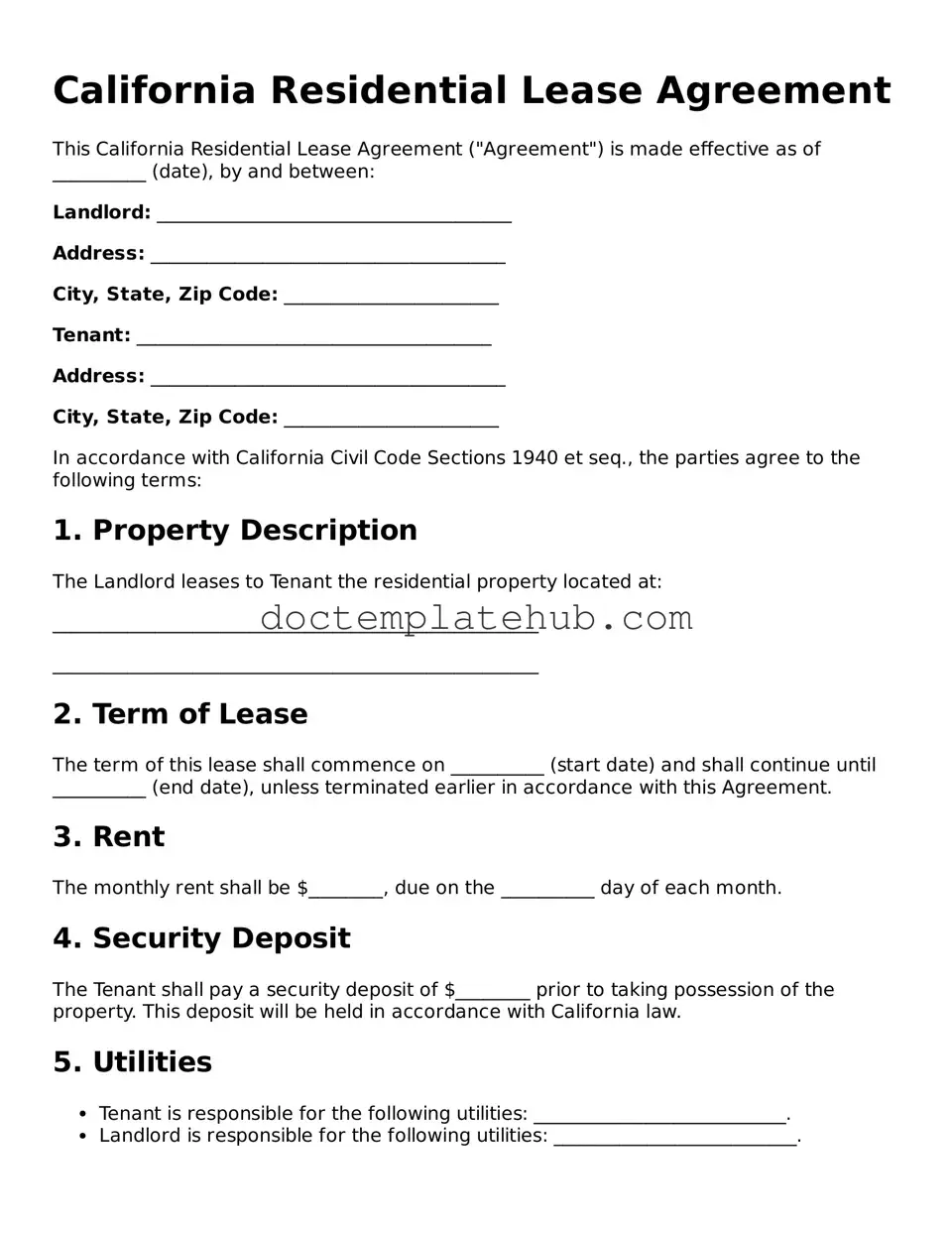The California Rental Application is similar to the Residential Lease Agreement as it serves as the first step in the rental process. This document collects important information from potential tenants, such as their employment history, credit score, and rental history. Landlords use this application to evaluate whether a tenant is a good fit for their property. While the lease agreement outlines the terms of tenancy, the rental application helps landlords make informed decisions before entering into a lease.
The Month-to-Month Rental Agreement offers flexibility for both landlords and tenants. Unlike a standard lease, which typically lasts for a year or more, this agreement allows either party to terminate the lease with proper notice. It shares similarities with the Residential Lease Agreement in that it outlines rent, security deposits, and responsibilities, but it is designed for shorter-term arrangements. This makes it ideal for those who may not want to commit long-term.
The Commercial Lease Agreement is similar in structure to the Residential Lease Agreement but is tailored for business use. Both documents define the terms of occupancy, including rent, duration, and responsibilities. However, the Commercial Lease Agreement often includes additional clauses specific to business operations, such as maintenance of the property and permitted use of the space. This document is essential for landlords renting to businesses and for tenants looking to secure a commercial space.
The Lease Addendum is a document that modifies or adds to the existing lease agreement. It can include additional rules or changes that both parties agree upon after the original lease is signed. Like the Residential Lease Agreement, it must be signed by both the landlord and tenant to be enforceable. This allows for flexibility in managing the rental relationship while ensuring that all parties are on the same page regarding any changes.
The Sublease Agreement allows a tenant to rent out their leased property to another party. This document is similar to the Residential Lease Agreement in that it establishes the terms of the rental arrangement, including rent and duration. However, the original tenant remains responsible for the lease with the landlord. This agreement is useful for tenants who need to temporarily leave their rental but want to maintain their lease.
The Roommate Agreement is a document that outlines the terms of living together in a shared rental space. While it is not a lease agreement, it complements the Residential Lease Agreement by addressing shared responsibilities among roommates, such as rent payment, utility costs, and house rules. This agreement helps prevent misunderstandings and ensures that all roommates are aware of their obligations.
The Property Management Agreement is a contract between a property owner and a management company. It outlines the management company's responsibilities, such as collecting rent, handling maintenance, and managing tenant relations. Similar to the Residential Lease Agreement, it establishes terms and expectations, but it focuses on the management of the property rather than the rental relationship itself.
The Eviction Notice is a legal document that a landlord may issue to a tenant for violating lease terms. While it is not a lease agreement, it is related in that it references the terms outlined in the Residential Lease Agreement. This notice informs the tenant of the violation and the required actions, such as vacating the property. Understanding the eviction process is crucial for both landlords and tenants to ensure compliance with the law.
The Security Deposit Agreement outlines the terms regarding the deposit a tenant must pay before moving in. This document is similar to the Residential Lease Agreement as it specifies the amount, conditions for its return, and any deductions that may be made. It protects both the landlord and tenant by clarifying expectations regarding the security deposit, ensuring transparency and fairness in the rental relationship.
